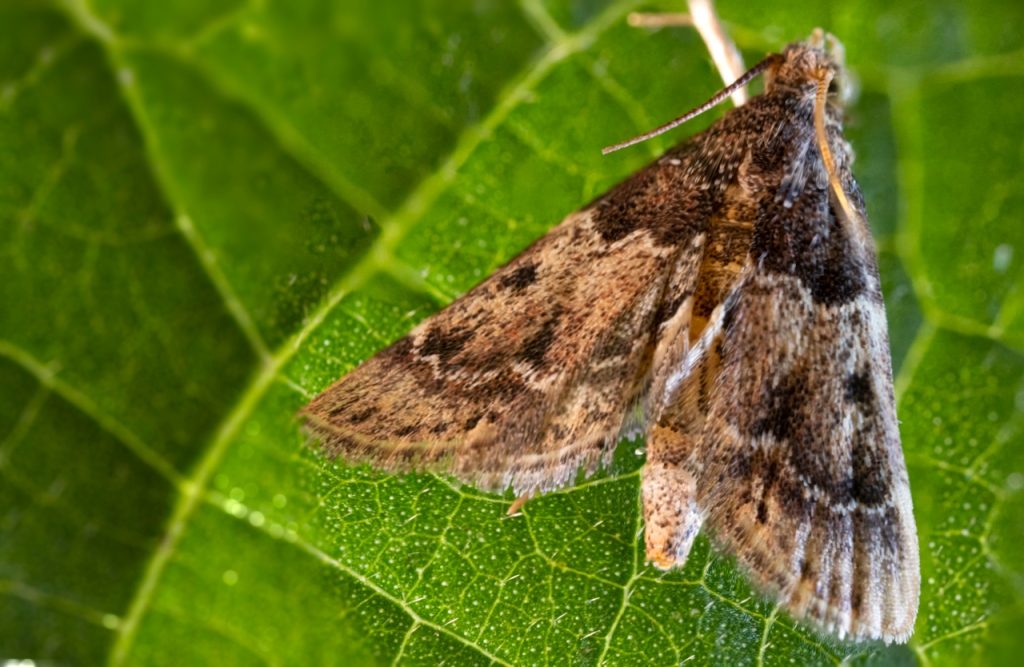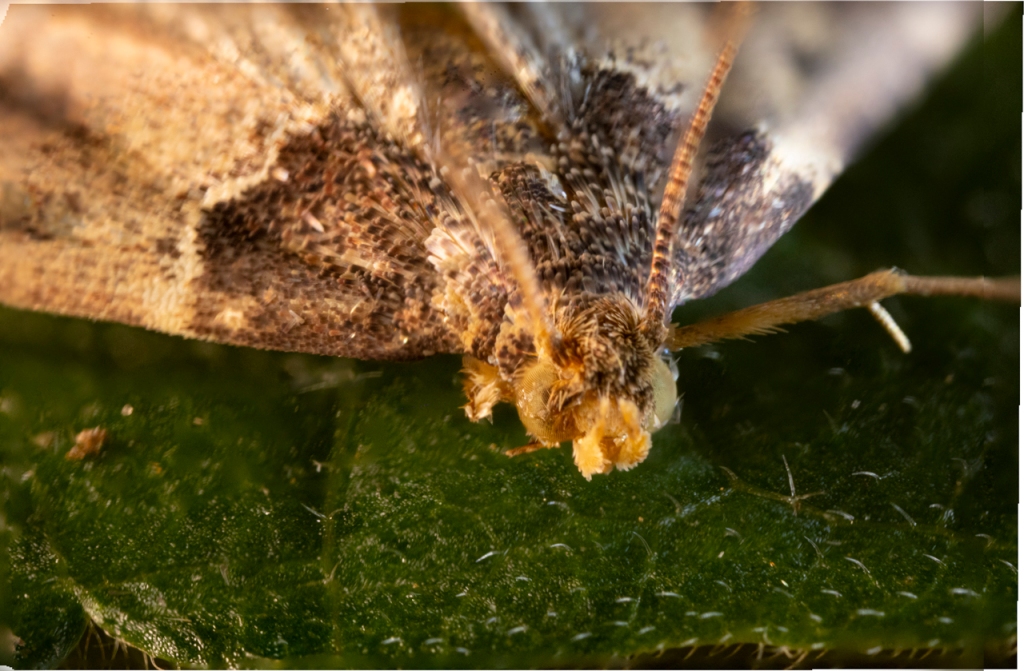
I saw an ad for the Lawoa macro lens that could photograph things up to 5 times life size. The price was only $399 and it came with a mount for my Canon R5 mirrorless camera. In a moment of weakness, I clicked the button and ordered the lens.
I’ve always loved high magnification macro photography but it was expensive. Canon has the MP-E 65mm that photographs 5 times life size but it’s well over $1,000 and I’d need an adapter for my mirrorless.
Here’s a link to my blog article from 2020 about using the Canon MP-E to photograph monarch butterfly eggs.

Once the Lawoa lens arrived, I needed to find a subject. I went on a search around the house and found a tiny moth about 1/3 of an inch long. Perfect subject except it didn’t want to be captured or photographed.
No, I am not going to kill a moth so I can photograph it. Nope! That’s not how I live my life.
So an hour later, the moth was resting on a leaf under a glass jar in my office. Equipment was assembled for the photo session: Tripod, Neewer Pro 4 Way Focusing Rail Slider, camera, Laowa lens attached, flash, Savage LED light on the right, and Lume Cube LED light on the left. (Scroll down to see a photo of the set-up.)

My time with the moth was highly frustrating — for it and me. The moth wanted to wander off the leaf. When it settled I would move the leaf and get it back in the frame and focused. This is not easy when the subject is magnified 5 times.
The moth twitched its antenna often. This messed up any hopes of focus stacking.
Eventually, the moth was set free. I left the equipment in place until I found a new subject.
The next day a fly got in the house and needed to be swatted. Turns out the little fellow wasn’t totally dead so I had a moving subject once again. Back to putting my subject on a leaf and waiting for it to calm down.
Lesson learned on the moth was that focus stacking would be necessary to get the photos I wanted. I settled in to take 5 to 10 photos for each focus stack.
The Laowa is a manual focus lens so there’s no in-camera focus stacking or focus bracketing as Canon calls it. I needed to move the knob on the focus rail to create each set of focus staked images. (Practice this skill ahead of time.)


The fly was still alive so the number of images I could get depended on its movements. Sometimes it sat still and other times it wiggled or twitched.

In a series of images, maybe only two or three would work. Below is an example of only two photos.




Focus Stacking in Photoshop
My software of choice is Photoshop for focus stacking. Open all the photos into a Layer stack. In Bridge, that’s (1) highlight the photos, (2) click on Tools>Photoshop>Load into Photoshop layers. In Lightroom, (1) select the images, (2) click Photo>Edit in>Open as Layers in Photoshop.
In Photoshop, highlight all the photos in the Layers palette. Edit>Auto Align Layers and wait. Then Edit>Auto Blend Layers and choose Stack from the options. Then wait again for Photoshop to do its work.


Most of the time, Photoshop does a pretty good job. A bit more work might be needed to fix tiny details.

Thanks for reading. Let me know below if you have any questions.

Fascinating!! Thank you for sharing!
Anthony
Anthony R Gargano
239-444-5525
Mob 609-221-4899
argargano@n2ss.com
LikeLike
Glad you liked it, Anthony. It’s a fun little lens.
LikeLike